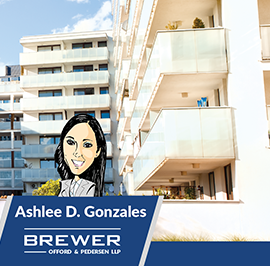In California, sellers have a legal obligation to disclose any material facts affecting the desirability of the property. This duty is not only rooted in the common law, but statute as well, codified by California Civil Code Section 1102 et seq. The sellers must complete the Transfer Disclosure Statement (“TDS”) and certify the information in the TDS. Additionally, many organizations such as the California Association of Realtors® (C.A.R.) or the PRDS® Forms offer a Supplemental disclosure form as well for sellers to complete.
What should the Seller write on the TDS? Well, anything that affects the value or desirability of the property in the mind of a reasonable purchaser. A common fact pattern that real estate litigators like myself often see is one where the seller has made a repair or a fix and fails to disclose the repair to the buyers. The sellers take the position that the leaky roof/window/plumbing was repaired and so they had no reason to inform the buyer of the repair as the sellers no longer felt the property had a defect. The buyers who are confronted with the leaky roof/window/plumbing (that apparently didn’t get fixed!) often feel that the sellers intentionally concealed the defect as any repair of water damage usually requires new paint or other cosmetic measures to address the water damage.
When the sellers fail to disclose a material fact, and the buyer brings suit against them, this type of case is often referred to as the “bad house” case. As most purchase agreements contain mandatory mediation provisions, and many purchasers tend to initial the arbitration provision, much of the recent law on bad house cases is played out in a private forum with a private judge. As attorneys, we are left with an older body of caselaw to extrapolate from about whether something is “material” and should be disclosed.
Accordingly, the recent case of Calemine v. Samuelson (Cal.2d February 17, 2009; B194461) was met with much attention in the real estate world as it was an opportunity to read an appellate decision regarding a “bad house” case.
Defendant Samuelson had purchased a condo in 1983. In the nearly twenty years that he owned it, the condo had intermittent water intrusion and flooding. He, along with some of his neighbors sued the developer. Waterproofing and repairs were made in 1992. Apparently, in 1996, other members of the condo filed a 2nd lawsuit alleging the repairs to their units were inadequate.
When Samuelson sold his condo to Mr. and Mrs. Calemine in 2002, he filled out the Transfer Disclosure Statement and checked the box indicating he was aware of “Flooding, drainage or grading problems” and then added further, “Heavy rains below ground walls & slab.”
Samuelson also informed the buyers (perhaps verbally, as it is not clear from the record), there had been water intrusion and water damage in the past but that there had been extensive repairs that had solved the problem. Samuelson did NOT disclose the two lawsuits.
In 2005, the condominium garage flooded twice, and twice more in 2006. The Calemines sued Samuelson and the Homeowners Association and others, for nuisance, breach of contract, negligence and misrepresentation and concealment.
Samuelson brought a motion for summary judgment at the trial court and prevailed but the Calemines took it up on appeal and the Appellate court concluded:
“…it is undisputed that Samuelson sufficiently disclosed the existence of the water intrusion itself. He even urged the buyers to get their own inspection. He failed however, to tell the buyers about the two lawsuits which had been filed.”
The buyers testified (by declaration) that they would not have purchased the property if they had known about the prior lawsuits. The Appellate court concluded there was a triable issue of fact regarding whether Samuelson was obligated to disclose the two lawsuits.
What this case illustrates is that when a seller makes the judgment call about what is material to the buyers, it can backfire. It is what the buyer feels affects the desirability and value of the condominium that gives rise to a legitimate dispute.
Here, the seller clearly disclosed the defect itself, but failed to disclose that the defect (water intrusion and flooding) had been so severe as to warrant two lawsuits from the owners. Had the buyers known, they could have reviewed the pleadings and discovered that the repairs were possibly insufficient. With that information, the buyers could have either backed out of the transaction with a justified excuse or negotiated a deeper discount or repair credit. Seller’s failure to disclose the lawsuits removed that choice from buyers.
Brewer Offord & Pedersen LLP serves the legal needs of homeowners, real estate and mortgage brokers, agents, brokerages, title companies, developers, investors, other real estate professionals and their clients. The firm also represent clients in debt collection, breach of contract matters, and other litigation and transactional work. The firm’s client range from homeowners, brokers and lenders based in Santa Clara County, San Mateo County, San Francisco County, as well as throughout other counties in California. You can contact us at: 2501 Park Blvd., 2nd Floor, Palo Alto, CA 94306, Ph: (650) 327-2900, Fax: (650) 327-5959, or on the web at: https://www.brewerfirm.com




